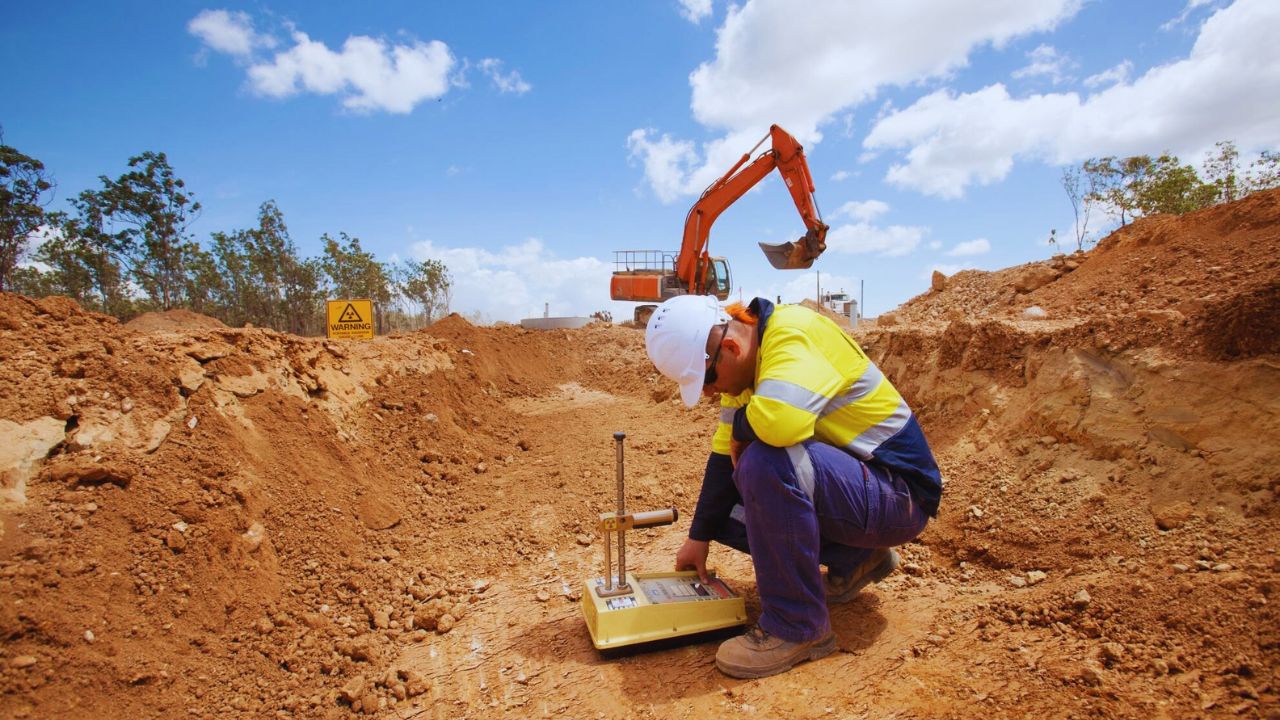What Does Geotheta Do?
What Does Geotheta Do?
Blog Article
Geotheta Can Be Fun For Anyone
Table of ContentsGeotheta for BeginnersSome Of GeothetaTop Guidelines Of GeothetaThe 30-Second Trick For GeothetaThe Ultimate Guide To Geotheta

They conduct site investigations, accumulate samples, perform research laboratory tests, and evaluate data to assess the suitability of the ground for construction tasks - Engineer of Record. Based upon their searchings for, geotechnical engineers supply referrals for structure design, incline stability, retaining structures, and reduction of geotechnical threats. They collaborate with various other professionals, such as architects, architectural designers, and building and construction groups, to make sure that geotechnical factors to consider are incorporated right into the general project layout and implementation
By assessing the behavior and homes of dirt and rock, they can identify prospective geotechnical dangers such as landslides, dirt negotiation, or slope instability. Their proficiency aids stop failures or crashes that might threaten lives and building. Right here are some in-depth tasks and duties of a geotechnical designer: Site Investigation: Geotechnical engineers conduct site investigations to gather data on subsurface conditions.
They analyze the information to understand the buildings and actions of the dirt and rock, including their strength, leaks in the structure, compaction characteristics, and groundwater problems. Geotechnical Analysis and Layout: Geotechnical designers assess the data gathered throughout website examinations to examine the security and viability of the website for building tasks. They do geotechnical computations and modeling to assess aspects such as birthing ability, negotiation, incline security, lateral earth stress, and groundwater flow.
Top Guidelines Of Geotheta
Foundation Style: Geotechnical designers play a vital function in developing structures that can securely sustain the desired framework. They examine the dirt problems and tons needs to determine the appropriate structure kind, such as superficial structures (e.g., grounds), deep structures (e.g (https://www.producthunt.com/@geotheta1)., heaps), or specialized methods like dirt enhancement. They take into consideration aspects such as negotiation restrictions, bearing ability, and soil-structure communication to develop ideal foundation styles
They review construction strategies, screen website activities, and carry out area inspections to validate that the design referrals are adhered to. If unanticipated geotechnical concerns arise, they examine the circumstance and provide suggestions for removal or modifications to the design. Risk Assessment and Reduction: Geotechnical designers analyze geotechnical dangers and risks connected with the job site, such as landslides, liquefaction, or dirt erosion.

Cooperation and Interaction: Geotechnical engineers function closely with various other experts associated with a job, such as engineers, structural engineers, and building groups. Efficient communication and collaboration are necessary to incorporate geotechnical considerations into the general job design and construction procedure. Geotechnical designers offer technical proficiency, answer questions, and guarantee that geotechnical needs are met.
The 7-Second Trick For Geotheta
Here are some kinds of geotechnical engineers: Foundation Designer: Structure engineers specialize in creating and evaluating foundations for frameworks. They analyze the soil problems, tons requirements, and site qualities to identify one of the most suitable structure type and style, such as shallow foundations, deep foundations, or specialized techniques like heap foundations.
They review the factors influencing slope stability, such as dirt residential properties, groundwater problems, and slope geometry, and create techniques to stop incline failures and alleviate risks. Earthquake Designer: Quake designers specialize in evaluating and making frameworks to hold up against seismic forces. They analyze the seismic danger of a site, examine dirt liquefaction potential, and create seismic layout criteria to make certain the security and durability of frameworks throughout earthquakes.
They perform area screening, gather examples, and examine the collected data to identify the soil residential or commercial properties, geologic developments, and groundwater problems at a site. Geotechnical Instrumentation Engineer: Geotechnical instrumentation engineers concentrate on tracking and determining the actions of soil, rock, and structures. They set up and keep instrumentation systems that check aspects such as soil settlement, groundwater levels, incline movements, and architectural displacements to evaluate performance and provide very early warnings of possible problems.
Geotheta - Truths
They carry out tests such as triaxial tests, combination examinations, direct shear examinations, and permeability tests to collect data for geotechnical evaluation and style. Geosynthetics Designer: Geosynthetics designers concentrate on the design and application of geosynthetic materials, such as geotextiles, geogrids, and geomembranes. They make use of these materials to boost dirt stability, reinforce slopes, offer drainage options, and control discover this erosion.
They often tend to be investigative people, which suggests they're intellectual, introspective, and investigative. They are curious, systematic, logical, logical, and rational. Several of them are also social, suggesting they're kind, charitable, cooperative, individual, caring, helpful, empathetic, tactful, and friendly. Does this seem like you? Take our complimentary job examination to find out if geotechnical designer is among your leading career matches.
In the workplace setting, geotechnical engineers use specialized software application devices to carry out estimations, produce designs, and evaluate information. They prepare reports, evaluation job requirements, connect with clients and staff member, and coordinate task activities. The workplace setting offers a helpful atmosphere for research study, analysis, and partnership with various other professionals involved in the job.
The Basic Principles Of Geotheta
They frequently see project websites to perform website investigations, analyze geotechnical problems, and collect information for analysis. These sees involve taking a trip to different locations, in some cases in remote or challenging surfaces. Geotechnical engineers may execute dirt sampling, conduct tests, and monitor building tasks to ensure that the geotechnical elements of the task are being applied properly.
Geotechnical designers also operate in specialized geotechnical research laboratories. In these centers, they carry out experiments, perform examinations on soil and rock samples, and analyze the engineering residential or commercial properties of the materials. Geotechnical laboratory designers function thoroughly in these atmospheres, taking care of screening devices, running instruments, and tape-recording data. They collaborate with other laboratory team to make certain exact and dependable screening outcomes.
Report this page